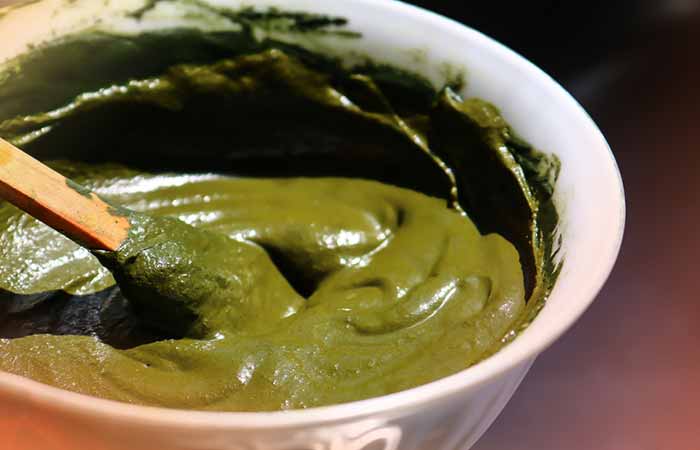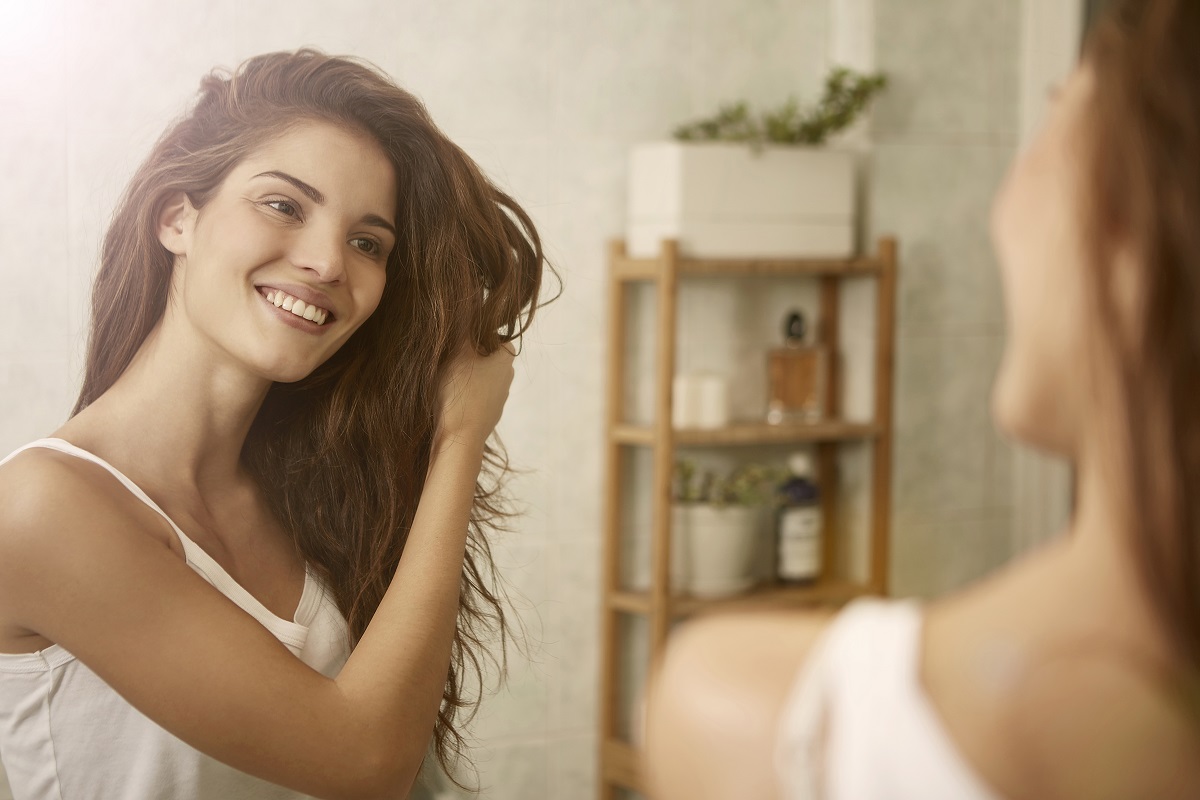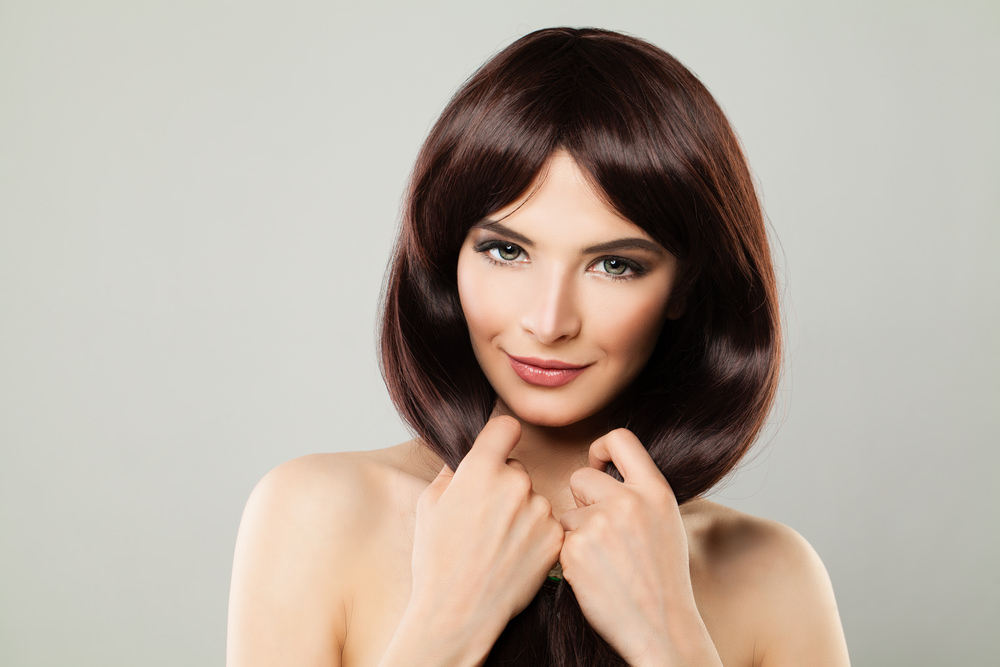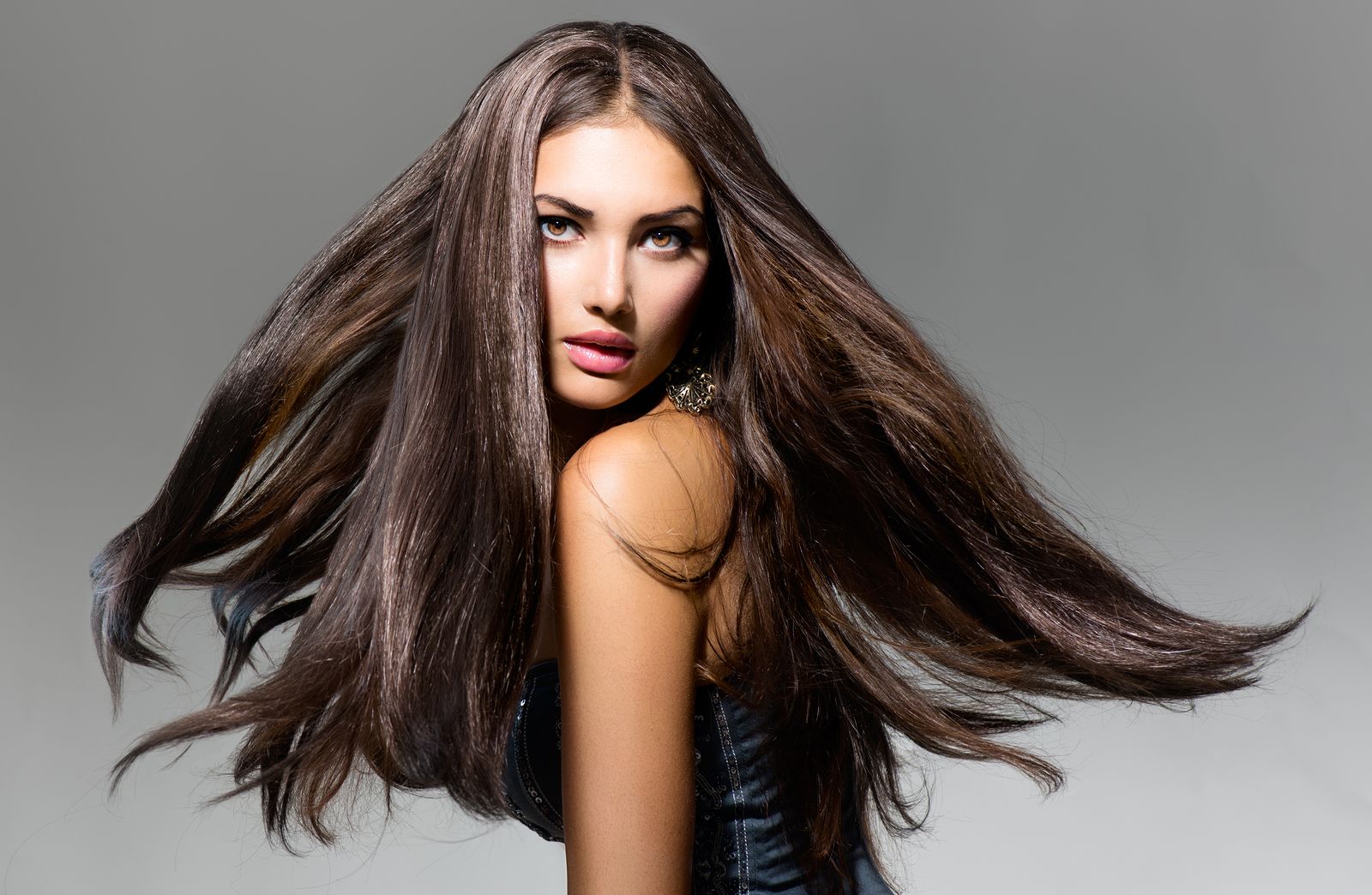
A natural dye like basma for hair has been used for over 3000 years. Appearing in India, it spread to Ancient Egypt and brought a lot of money to traders and plantation owners. Today a bag of gray-green powder costs a penny, and once was equated in value to gold. How is the composition useful, how to use it and how can you set off the natural hair color with it?
Content

What it is
This plant-based paint was first used in India. It was here that the Indigofer dyeing tree grew in whole groves, the leaves of which were the raw materials for the synthesis of the coloring pigment. At first they were harvested from wild plants, then whole cultivated plantations began to be planted, which brought huge income to their owners.
In ancient times, only wealthy people could buy a sack of paint, and dyed curls, eyebrows and eyelashes spoke of their special privileged position. The Egyptian pharaohs, the kings of Mesopotamia and other countries and peoples knew Basma. So what is it?
It is a powder made from dried, crushed and specially processed leaves. The final color depends on how the plant material was processed. Pure basma gives an amazingly beautiful indigo blue, which is still used to dye fabrics in Asia. On the hair, basma plays with black tones, and in combination with henna gives a palette of chestnut and black shades, which are also used for coloring eyebrows and eyelashes.

What it contains and what is useful
Like any herbal preparation, indigo powder is rich in components useful for the body, and in a concentrated form. That is why in Asian countries it is still used internally to relieve inflammation and improve liver function. What does it contain?
- Vitamin C, which strengthens the walls of blood vessels, increases local immunity, improves metabolism.
- Tannins that relieve inflammation, tone up, strengthen hair follicles.
- Organic acids with moisturizing and caring properties.
- Coloring pigments that give curls shades of dark chestnut, black or red.
- Waxes and resins that even out the structure of each hair, giving shine and color intensity.
Powder is used for complex care of curls, scalp and coloring.
Important! The intensity and shade after dyeing depends on the structure and original color of the strands, so the effect is not always predictable!
Using indigo powder, you can achieve the following effects:
- strengthen hair follicles and eliminate hair loss;
- increase blood circulation and the flow of nutrients to the bulbs;
- to eliminate dandruff and improve the scalp;
- give shine to curls, make them smooth and obedient;
- give a new shade that lasts for several months.

But the main plus is naturalness and safety for health. There is no chemistry, ammonia, hydrogen peroxide and other aggressive components that tend to accumulate in cells and cause various changes.
Application features
Usually, the powder is used primarily for coloring and only then is it remembered about its healing and health-improving effect. But these two properties are inseparable from each other. You can use the product both independently and in combination with another vegetable dye - henna.
In the first case, you get black or a color close to it, and in the second - a whole range from titian to dark chestnut. You can use natural paint no more than once a month. Experts recommend that the owner of dry curls and scalp add any cosmetic oil to the working composition.
This natural dye has one not entirely pleasant property. The color of the mop can acquire a greenish tint 2-3 months after dyeing.
Advice! You need to maintain the desired shade every 1-1.5 months, and do not keep the composition on the curls for more than 2 hours.
It is not recommended to use indigo powder in its pure form. It will give a bluish-black color with a greenish tint. This can be seen especially clearly on the curls with gray hair. That is why it is combined with henna, vegetable oils, vitamins to enhance the caring effect. Especially carefully they start staining for the first time, since the shade obtained after the first procedure will create the basis for strengthening it in the future. It is important to follow the instructions clearly and measure the volume of the components.

Features of the preparation of the working solution, contraindications
The working solution is a gruel of dyes, which is prepared from vegetable powder and water. The volume of the powder is calculated from the proportions of the recipe, the length and density of the curls. So much water is added to bring the composition to the consistency of thick sour cream. This will make the paint easier to apply.
How to make a solution?
- Pour the powder into a non-metallic container (plastic, glass).
- Boil water and cool to 90C.
- Pour into dry powder in a thin stream, stirring with a wooden or plastic spoon.
To increase the caring effect, olive, peach, coconut or other oils, vitamin E or other special products. The composition is applied warm so that the nutrients penetrate into the scalp and nourish the bulbs.
Of the contraindications for the use of basma, it can be noted:
- skin diseases (fungus, psoriasis, etc.);
- wounds, abrasions, scratches, bruises of the scalp;
- light hair color (due to the unpredictability of the result);
- too dry scalp prone to irritation;
- allergy to plant materials, which is manifested by skin inflammations and rashes.

You cannot use this type of dyeing after a perm or dyeing. The interval to be maintained is at least 2 months.
Shades
When staining with basma and henna, 4 types of shades are distinguished, which can be obtained by combining different proportions of the components.
- Black (henna and basma in a ratio of 1: 3).
- Bronze (2: 1).
- Chestnut (1: 2).
- Blond (1: 1 with a shutter speed of 25-30 minutes).
There is also a whole palette of intermediate shades, the appearance of which is purely individual and depends on the type of hair. But you can enhance or weaken the intensity of the color by adding special components and properly washing your hair immediately after staining.
The table below provides information on the holding time of the formulations in minutes, depending on the desired result.
| Required shade | Henna holding time (min.) | Basma holding time (min.) |
| Light blond | 2-3 | Apply liquid solution to hair and rinse immediately |
| Blond | 5 | As stated above |
| Dark blond | 8-10 | 4-5 |
| Light brown-haired | 10-15 | 5-7 |
| Brown | 20-25 | 15 |
| Dark brown-haired | 40 | 30 |
| Light chestnut | 25-30 | 20-25 |
| Dark chestnut | 40 | 45 |
| Black | 60-90 | 60-90 |
The intensity also depends on the dyeing technology. Distinguish between joint coloring with henna and basma and separate. In the second case, one composition is first applied to the curls, and then the second for a certain period of time. This is discussed in more detail below.
How best to dye curls
Admirers of natural dyeing claim that a separate or sequential method gives better results than a joint one. Why? To begin with, henna is always applied at the first stage, and then basma.This is done in order to minimize undesirable consequences in the form of unpredictable shades. The darker the color is needed, the more powder is used and the longer it is kept on the head.
Advice! The curls are washed and slightly dried before applying the composition. This improves the conditions for the penetration of coloring pigments into the curl.
To get chestnut, almost chocolate color you need to prepare henna gruel and apply to hair for 1.5 hours, rinse. At the second stage, apply basma for 1 hour, rinse. To obtain a black color, both compositions are kept for 2 hours.

And here red shades can be obtained using only a joint staining method. For this henna take 2 parts, and basma - 1, combine both dry powders and dilute with hot water. Exposure time on curls - 1 hour.
To prevent pigments from staining the skin, the temporal and frontal parts of the face are lubricated with a fat cream. The composition is applied with a brush starting from the back of the head and distributed from roots to tips. Next, put a plastic cap on your head, you can wrap it up with a towel. It's so simple and useful to dye dark and light braids.
Gray hair dyeing technology
Hair with gray hair can also be given the desired shade, although you have to work hard and carry out several procedures, which in general will take 3-4 months.
The time frame is very important here, as is the insulation of the head with polyethylene. The greenhouse effect allows the dye to penetrate into the curl faster and fix in it. For gray strands, you need to use only consistent dyeing technology, especially if there are more than 1/3 of them. Important! Do not be alarmed if, after applying henna, the gray hair has acquired an unpleasant orange hue, Basma will correct everything!

And yet, if the curls are too dry, oil must be added to the mixture of henna and water. It can be a regular olive oil or a specialty cosmetic. It is noticed that in winter the hair is less dry and brittle, which means that it is better to experiment with compositions in the cold season.
If the result is upsetting?
Coloring with vegetable compositions is good because at first you can adjust the intensity of the resulting shade. The main thing is to do this immediately after washing your hair, so that after contact with the mixtures, no more than 4-5 hours pass. Although experts say that pigments are fixed inside the curl only after 1-2 days, it is still better not to experiment!
So what can you do?
- If the desired black color did not impress with its intensity, basma is applied 1 more time for 1 hour.
- If the color, on the contrary, is too intense, deep (black or chestnut), you can make it lighter by rinsing the curls with warm water with the addition of lemon juice (for 1 liter of 1 tablespoon).
- Excessive brightness, which is not always pleasant when stained in bronze and red, can be muted with olive oil. It is heated and applied to the curls for 30 minutes. Repeat the procedure if necessary.
If everything suits you and you don't need to change anything, you don't need to use alkaline shampoo for the next 2 days. During this time, the pigments will firmly set and will not be washed off with detergents.

And yet, it is almost impossible to achieve perfect results the first time. This is a long and hard work, which ultimately gives a great effect in the form of healthy, shiny and well-groomed hair.
Caring and nourishing mask
You can also combine basma with henna for the preparation of medicinal masks... It can be used between the main stains to maintain the health of the curls. To prepare the mask you need:
- combine both powders in equal volumes (about 100 g each);
- add 1 dessert spoon of natural cocoa powder;
- beat the egg yolk;
- add 1 tsp. olive oil.
The ingredients are mixed with a pestle or silicone spatula, slightly warmed up in a water bath to body temperature and applied to the head. Action time - 1 hour.Owners of black hair can make a caring mask only from basma with additional ingredients. It can be kefir, yogurt, mayonnaise, vegetable oils. It all depends on the expected results.

Reviews
Kristina: Gray hair can really be painted over with vegetable paints. I was convinced by myself, but I had to experiment for a couple of months to achieve the desired shade. My hair is completely gray, and in order to get a deep brown color, the basma always held longer than necessary. Only after 3 staining did I get what I needed.
Olga: By nature, my color is dark, I am brown-haired, and to give the natural color shine and clarity, I mixed henna and basma. It seems like everything and nothing, but in the light, the curls still give off greens ... I will not experiment anymore.
Irina: I wanted to become red, brightened with hydrogen peroxide, then dyed .... The result is a bright mountain ash, I had to keep the basma again for 2 hours.
Tatiana: Basma is my hair care product. I make smoothing masks with mayonnaise and mustard, sometimes I just dilute with water and add oils. I do not hold it for long, so the hair does not have time to be colored, only a shade appears, but it is washed off in 1 week.
Svetlana: Everything is fine, but it is almost impossible to wash these nasty vegetable grains. This is my only experience, I won't.
Ksenia: My hair is curly, very naughty, I don't use straightening chemicals. But staining as described in the article helps me to cope with hair. The curls become smooth, shiny, combed easily and not so curly.
You can learn more about herbal paints and coloring after watching the video. Here is not only detailed instructions from a specialist, but also a list of those secret components that will help make the color unique!
